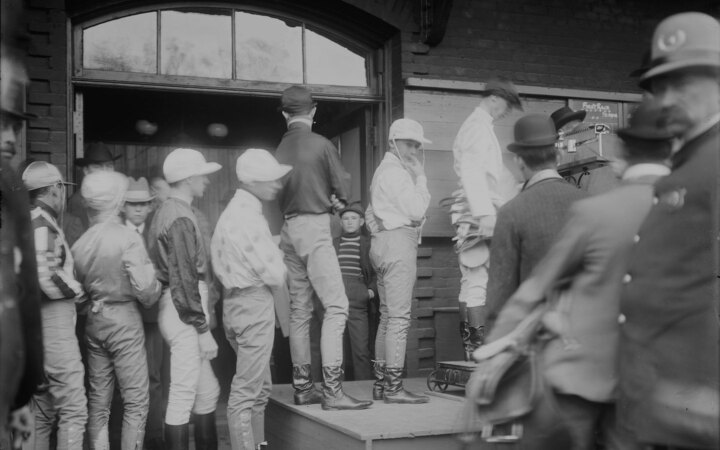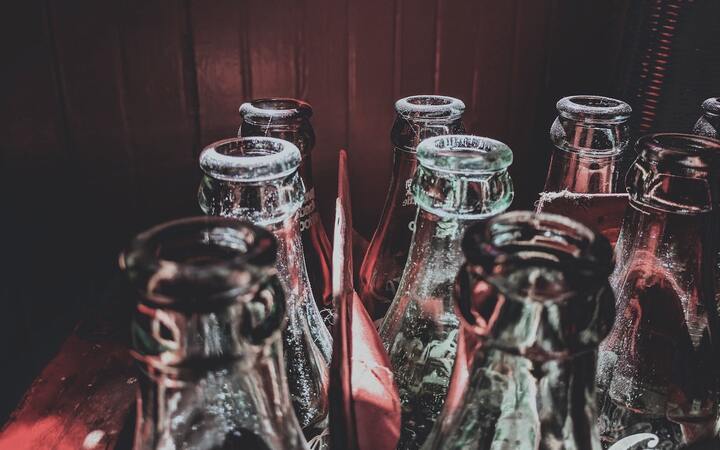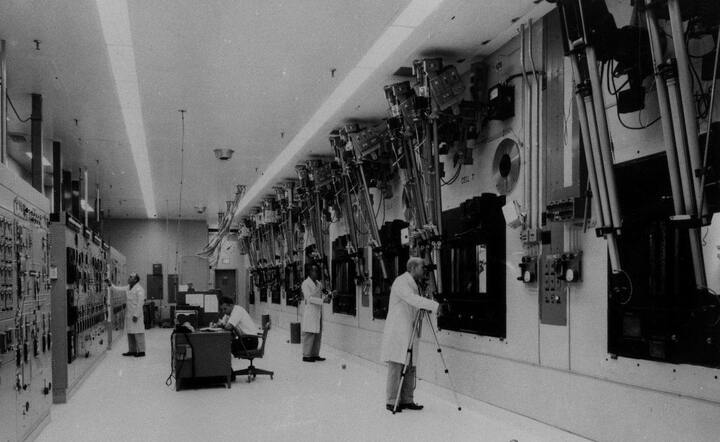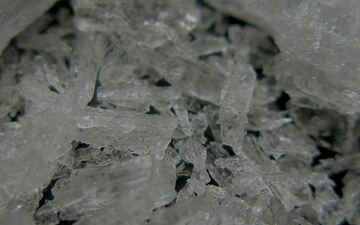Phosphoric acid
Our first conspiracy theory has all the best qualities:
- It sounds insane.
- At first, the facts seem to support it.
- Later, the facts lead to disquieting reevaluations of the medical system.
So here’s the conspiracy:
“Cola has so much sugar in it that you’d throw up from drinking it, except they add an anti-vomiting drug to stop that from happening.”
Fact #1: Phosphoric acid is the active ingredient in some over-the-counter anti-nausea drugs.
The common brand name here is Emetrol, but generic equivalents are everywhere too.
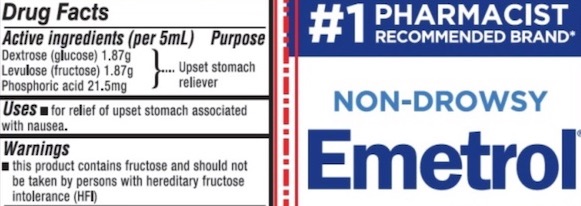
Fact #2: Cola contains phosphoric acid.
Nothing controversial here, it’s right on the label.

My first thought when I saw this was that, OK, cola has phosphoric acid. But surely it has much less than the drugs. Well…
Fact #3: Cola has just as much phosphoric acid as anti-nausea drugs do.
The drugs contain 64.6 mg of phosphoric acid in a small dose and twice that in a large dose. This is easy to calculate given the information on the label above and the fact that the recommended dose is 15-30 mL.
Cola probably contains something like 200 mg per can. This isn’t trivial to figure out. I estimated it in two ways, which I trust only because they give similar answers:
- Random internet people claim that Coke is around 0.055% phosphoric acid. This suggests that a standard 382 g can has 210 mg.
- This paper says that a single can of Coke contains 58mg of phosphorus, and this leaflet from Coca-Cola Hellenic gives a similar number. Meanwhile, the chemical formula for phosphoric acid is H3PO4. Since the molecular weights for hydrogen (H), phosphorus (P), and oxygen (O), are 1.01, 16.0, and 30.97, each unit of phosphorus should convert to (1.01×3 + 30.97 + 16 × 4)/30.97 = 3.16 units of phosphoric acid. So a can of Coke should have around 58mg × 3.16 = 183 mg of phosphoric acid.
| Dose | Sugar | Phosphoric Acid |
|---|---|---|
| Emetrol (small dose) | 11.22 g | 64.5 mg |
| Emetrol (large dose) | 22.44 g | 129 mg |
| Coke (one can) | 39 g | ~200 mg |
Interestingly, even the ratio of phosphoric acid to sugar is almost the same (around 5.5 mg phosphoric acid / g sugar).
What’s the catch? If Emetrol is just a more expensive and worse-tasting cola, why does every pharmacy everywhere sell it? Well, if you think that’s disturbing, keep reading.
Fact #4: You wouldn’t throw up if the phosphoric acid wasn’t there.
You can just try it. A can of cola has 39 grams of sugar (10 teaspoons), and around 350 ml of water. I measured these out into two glasses, which looked like this:
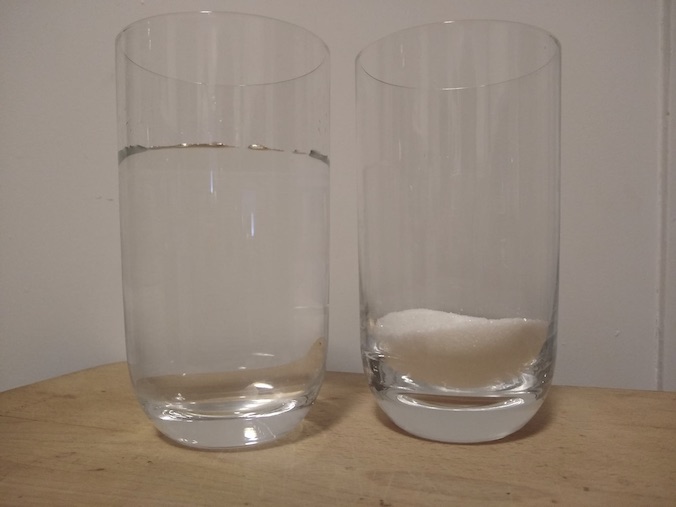
After mixing these up, the result was very sweet, but all members of House Dynomight—sometimes after a lot of encouragement—drank some without feeling the slightest bit ill.
Apple juice has just as much sugar as cola. Non-cola soft drinks have citric acid instead of phosphoric acid. (As do some diet colas.) Obviously, people drink these without vomiting. Root beer, it turns out, has neither phosphoric nor citric acid. For this reason root beer has a higher pH than other soft drinks and probably isn’t as bad for your teeth.
Fact #5: There’s no evidence that these anti-nausea drugs actually do anything.
The Mayo Clinic simply states that the combination of sugar and phosphoric acid “has not been proven to be effective”.
Puzzling. Or, you can go to the NIH’s information page on different versions of the drug:
All of these state:
Marketing Status: unapproved drug other
DISCLAIMER: This drug has not been found by FDA to be safe and effective, and this labeling has not been approved by FDA. For further information about unapproved drugs, click here.
Don’t click there, it’s useless. But here’s the history: The FDA was created in 1906, but only gained the authority to approve drugs with the 1938 Federal Food, Drug and Cosmetic Act. However, this only gave authority to approve new drugs, and only said that they needed to be tested for safety. It wasn’t until 1962 that the law was amended to require that new drugs be tested for effectiveness.
As far as I can tell, drugs like Emetrol can be sold because (a) they’re grandfathered in because they’ve been around forever, and (b) phosphoric acid is generally recognized as safe meaning the FDA thinks it’s unlikely to be harmful. It’s in all sorts of food like almonds, beer, bread, and jams. To the best of my knowledge, there’s no evidence at all that these drugs have any effect other than placebo. (Though, of course, absence of evidence is not evidence of absence.)
Fact #6: The phosphoric acid is there for flavor.
On the one hand, the conspiracy is even more true than claimed: Cola doesn’t just contain an anti-nausea drug, it basically is an anti-nausea drug. It’s just that this “drug” may not do anything.
So why is it there? Well, we could always ask the people who put it there. The Coca-Cola corporation says they include phosphoric acid in their beverages because:
“It gives them their tartness.”
Conclusion: If there’s a conspiracy here, it’s not with the cola, it’s with the drugs.
FAQ
How much phosphoric acid is in a standard 12 oz / 330ml can of cola?
Around 200 mg.
What is the active ingredient in anti-nausea drugs like Emetrol?
Phosphoric acid. A typical dose would contain 65 mg and 130 mg of phosphoric acid.
Would you throw up from drinking cola without phosphoric acid?
No. Lots of other beverages have equivalent amounts of sugar without containing phosphoric acid.
Mexican Coke
Our other conspiracy theory is more well known:
“Mexican Coke contains sugar rather than high-fructose corn syrup, and is therefore better or healthier or something.”
Stores and restaurants in the US charge much more for Mexican Coke. What’s going on?
Fact #1: Real sugar is exactly 50% glucose and 50% fructose.
Cane sugar is made of sucrose. One molecule of sucrose is one molecule of fructose glued to one molecule of glucose.
Fact #2: High fructose corn syrup (HFCS) can have basically any ratio of fructose and glucose.
The standard types are HFCS 42 (42% fructose) which is usually used in processed foods like bread and breakfast cereal, and HFCS 55 (55% fructose) which is mostly used for soft drinks. The rest is mostly glucose with traces of other sugars like maltose. However, HFCS can be made with basically any ratio, and it’s not obvious what’s used in any particular product.
Fact #3: Mexican producers of Coke threatened to stop using sugar back in 2013.
In 2002, Mexico created a 20% tax on any beverages not sweetened with cane sugar. American HFCS manufacturers, who have no chill at all, challenged this at the WTO, eventually forcing Mexico to remove the tax and apparently winning $160 million in damages.
In October 2013, Mexico passed a tax on junk food, including a 1 peso ($0.05) per liter tax on soft drinks. In response, one of Coke’s bottlers in Mexico announced that they might start using corn syrup instead.
I was confused by this: Could they avoid the tax by using HFCS? As far as I can tell, no, it’s just that HFCS was already cheaper than cane sugar, and that the tax created an incentive for cost-cutting.
Anyway, this announcement caused Americans who think Mexican Coke is better to freak out. Except, shortly after that announcement, Coca-Cola clarified that Mexican Coke made for export to the US is a “nostalgia product” and would still be made with pure sugar. Except…
Fact #4: Even before 2013, lab tests showed that Mexican Coke had no sucrose.
Ventura et al. (2010) and used liquid chromatography to analyze the contents of various beverages. Here’s what they found (all measurements in g / 100 mL):
| Drink | Fructose | Glucose |
|---|---|---|
| American Coke | 7.2 | 3.9 |
| Mexican Coke | 5.4 | 5.0 |
The ratio of fructose and glucose is indeed more even in the Mexican version. But remember how sucrose is exactly one molecule of fructose and glucose? Since they have the same molecular weight (it’s the same atoms, just arranged differently) the weight should be exactly the same. That could just be measurement noise, though, so they went ahead and directly checked for sucrose. They found that Mexican Coke contained zero sucrose.
Walker et al. (2014) did a similar experiment, except to be really sure they used not just liquid chromatography but also metabolomics and gas chromatography. By all three measurements, they found that American Coke contained around 60% fructose, while Mexican Coke was somewhere around 50%. They also directly tested for sucrose and found that Mexican Coke had some but just a little (12.5 g/L as opposed to 51 g/L of fructose and 47.9 g/L of glucose). They also found that the Mexican Coke contained around 7% more sugar overall.
Since this second paper was published in July 2014 it almost certainly used Mexican Coke made before October 2013. (You need time for the Coke to be made, sold, experimented on, along with time to write the paper, wait for reviews, and then wait for publication.) Thus, this predates the switchover of Mexican Coke from sugar to HFCS.
I think the most likely explanation for these experiments is sucrose inversion: In the presence of heat or acid, sucrose will naturally break up into fructose and glucose. Likely this happens during the manufacturing of Mexican Coke. Regardless of the source of the sugars in Mexican Coke, we still have these facts:
- The fructose/glucose ratio in Mexican Coke was nearly 50/50.
- The fructose/glucose ratio in American Coke was higher, something like 60/40.
Let’s be charitable to the conspiracy. Let’s ignore that Mexican Coke had 7% more sugar overall, and let’s assume that the Mexican Coke you overpay buy today still has a 50/50 ratio. Is it better?
Fact #5: Fructose and glucose are metabolized differently.
Once glucose is floating around the body, it can be absorbed by basically any random cell. Those cells break it down to provide energy. On the other hand, fructose needs to be metabolized by specific organs. Recent research suggests that small amounts of fructose are metabolized by the gut, with larger amounts being metabolized by the liver.
These differences have all sorts of complex implications that are still being worked out. Whatever the case, it’s reasonable to think the difference could affect health somehow.
Fact #6: The science on the health effects of glucose vs. fructose is inconclusive.
There are some hypothesized effects: For example, glucose seems to cause an insulin spike, but fructose doesn’t. It’s unclear if that is good or bad—the insulin spike might make you feel full and stop eating. There are also suggestions that the liver might produce fat when metabolizing glucose.
As far as I can tell, the experts are very much split on the science here. Some seemingly credible people claim that fructose might be worse than glucose, and some claim it makes no difference. Some even suggest that sucrose itself is less harmful than a 50/50 mixture of glucose and fructose since the bond needs to be broken. (But remember that the sucrose in Mexican Coke is already broken down.)
I don’t know enough to figure out who is right, or which experts are more credible. I think the sensible approach is to just accept the uncertainty. While I emphasize that you shouldn’t trust me, here’s my completely made-up posterior about the health effects of cane sugar vs. HFCS in the 60 / 40 ratio present in American Coke.
| Sugar vs. HFCS | Probability |
|---|---|
| Sugar much worse | 2% |
| Sugar slightly worse | 15% |
| Same | 50% |
| Sugar slightly better | 30% |
| Sugar much better | 3% |
A lot of people seem to think cane sugar is healthier because it’s more natural. If so, that would suggest that honey would be even better. But did you know that honey also contains more fructose than glucose? It’s incoherent to both use “naturalness” and “fructose bad” as justifications for HFCS being worse than sugar, especially since the sugar in soft drinks isn’t really “natural” anymore.
If you accept my posterior above, I guess decision theory says you should prefer cane sugar. Fine, but remember, there is overwhelming evidence that all added sugars are harmful. At best, cane sugar is slightly less bad than HFCS.
Fact #7: Blind tests do not support the idea that Mexican Coke tastes better.
The internet is awash with people claiming they prefer Mexican coke, but these people are unscientific. Blind tests tell a different story:
- First We Feast did a blind test with six staffers. They did worse than chance at guessing which was American and which was Mexican.
- Science Jon also did a test where testers were given four samples, two of each type. Out of 13 people, only one was able to pair up which samples were the same, and that person couldn’t repeat the trick in a second test with five samples.
- Serious Eats did a test that used various conditions (in a glass bottle, in a cup with ice, etc.). They found that people overwhelmingly preferred a bottle to a can. Half of the people had no preference between the Mexican and American Coke, while half of people preferred the American version, and no one preferred the Mexican version. In a second experiment, they presented two American Cokes but lied to people that one was Mexican. People overwhelmingly chose the fake “Mexican” version.
- The Huffington post did a test where 20 editors blindly tasted the two versions. They report that 85% “could tell the difference” and 80% preferred the Mexican Coke. That supports the hypothesis, but they give no details about how blinding was done so I don’t completely trust it. Also, they did a similar test with Pepsi and found there was no difference.
- The Miami times did a test where 3/9 people tasted no difference 5/9 preferred the American version, and zero preferred the Mexican version.
Overall, there’s no clear evidence that the Mexican version truly tastes better. If it does, it’s a placebo from being told it’s a special import or maybe just the fact that it comes in adorable little glass bottles.
Conclusion: Mexican Coke doesn’t taste better, has no clear health benefits, and doesn’t really contain “natural” sugar anyway.
P.S.
All sugary drinks are bad for you, don’t drink them.
If you must drink cola, drink diet cola, sweetened with aspartame. As far as we know, aspartame has basically zero negative health effects. For example, this recent meta-analysis found no significant effects on blood glucose levels, insulin levels, cholesterol, triglycerides, body weight, or energy intake. There was a tiny effect on HDL cholesterol, but that’s “good” cholesterol, and the effect was to increase it. It’s certainly possible there are some downsides that aren’t yet established—for example, while current evidence suggests aspartame is not genotoxic, it’s still somewhat open. Still, any risks of aspartame are an order of magnitude lower than the huge and indisputable harms of sugar. Water is safer than diet cola, but diet cola is much safer than real cola.
Also, remember that all cola (including diet) is bad for your teeth, due to the acidity. If you drink it, try to do so with meals, try to use a straw, and try to drink some water after. Also, don’t brush your teeth immediately after drinking cola. The enamel on your teeth is vulnerable due to the acidity. Before brushing, you should wait 30-60 minutes for your saliva to repair the enamel.





